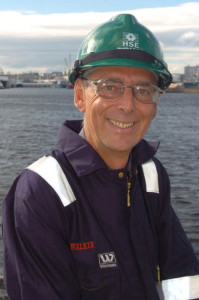NSOAF audit: Interfacing, bridging processes lack clarity in North Sea

I never fail to be impressed by the safe and successful drilling of a well. The way a host of different companies overcome the challenges of working under tight timescales and financial budgets and with the complex interactions between man and machine in harsh offshore conditions is quite astonishing.
However, if matters start to deteriorate, those same challenges can mitigate against effective well control. Unless the relationships between the people and the organizations involved are clear, and individuals understand their roles to deliver their contributions competently, the final “hand on the button” to shut-in or disconnect a well will be ineffective.
As a regulator, I acknowledge that the industry has made great strides in addressing essential hardware, such as BOP operability and subsea capping stacks, but there are still ranges of improvements that the industry needs to embrace. Driller competence, real-time situational awareness by the crew about current well conditions, the quality of information displays and controls, and the influence of company systems and interfacing arrangements are all crucial aspects for well control. However, there is concern that the industry is not adequately tackling these aspects.
As a result, the North Sea Offshore Authorities Forum (NSOAF), which I currently chair, conducted a multinational audit across the North Sea in 2013 to see how offshore operators and their drilling contractors were incorporating the necessary human and organizational factors into their well control systems and practices. The aim was to see how the North Sea offshore industry was focusing on these issues and to identify good practices to help both industry and regulators learn lessons.
Regulators from the UK, Norway, Denmark, the Netherlands and Germany undertook 11 coordinated audits covering these aspects of well control. The audits looked at a range of operators and contractors throughout the North Sea and included platform-based drilling, jackups and harsh-environment semisubmersibles. Although only a relatively small number of installations were audited, the sample was considered reasonably representative of the industry as a whole, so the findings are relevant both in the North Sea and farther afield.
Encouragingly, the regulators received strong assurance from the drillers themselves, who felt they had clear authority to shut-in wells when they felt it necessary. Recent improvements in rig designs also meant drillers and other key well control personnel were, in the main, getting clear and comprehensive ranges of information on which to base their well control decisions. However, the audit found a broad range of performance, and hence the need for those on the lower end to emulate the more advanced operators and drilling contractors, particularly in the wider use of scenario-based training.
Unsurprisingly, the audit identified that the general shortage of experienced drilling personnel has contributed to accelerated promotions to key drilling positions, given the high activity level of the industry. There was widespread acknowledgement that this led to difficulties in keeping competence assurance programs fully effective. Industry must not ignore this problem.
However, the major weakness identified by the audit was the poor quality of interfacing arrangements in the North Sea. Given the fundamental need for the client operator, the drilling contractor, and the numerous specialist contractors to operate as a unit, the lack of clarity in the various levels of bridging and interfacing documentation and processes was surprising. Any potential confusion between key players can lead to unacceptable delays for taking crucial well control decisions or actions.
In particular, the industry must address the absence of effective gap analysis of the client and drilling contractor systems and documentation that the audit often found. Moreover, with the strong emphasis on penalizing underperformance in areas of rig utilization – “up time,” etc – it was unclear what negative influences resulted from such penalties in an environment where the early application of well control measures are ostensibly encouraged. This potential for negatively influencing sound well control management did not seem to have been sufficiently addressed by the industry. Conversely, and disappointingly, we saw little evidence of the monitoring of performance-related indicators specifically focused on well control.
In summary, the audit found a range of approaches – some impressive, others less so – to the human and organizational factors in well control. As mentioned earlier, this work has a wider application than just in the North Sea, and the audit report should be of interest to all within the global offshore oil and gas industry. I hope that companies will reflect on the findings and use them in their continuous improvement process for these crucial aspects of offshore safety and environmental protection. The good practices recorded in this report should prove easily adoptable by others and, likewise, any familiarity with the poor practices that are also highlighted should act as a driver for change.
Steve Walker is Head of Strategic Intervention for the UK Health and Safety Executive Energy Division – Offshore. He is also currently Chairman of NSOAF.
Click here to read key findings of the audit.
Click here to read Steve Walker’s previous DC editorial from 2013.




